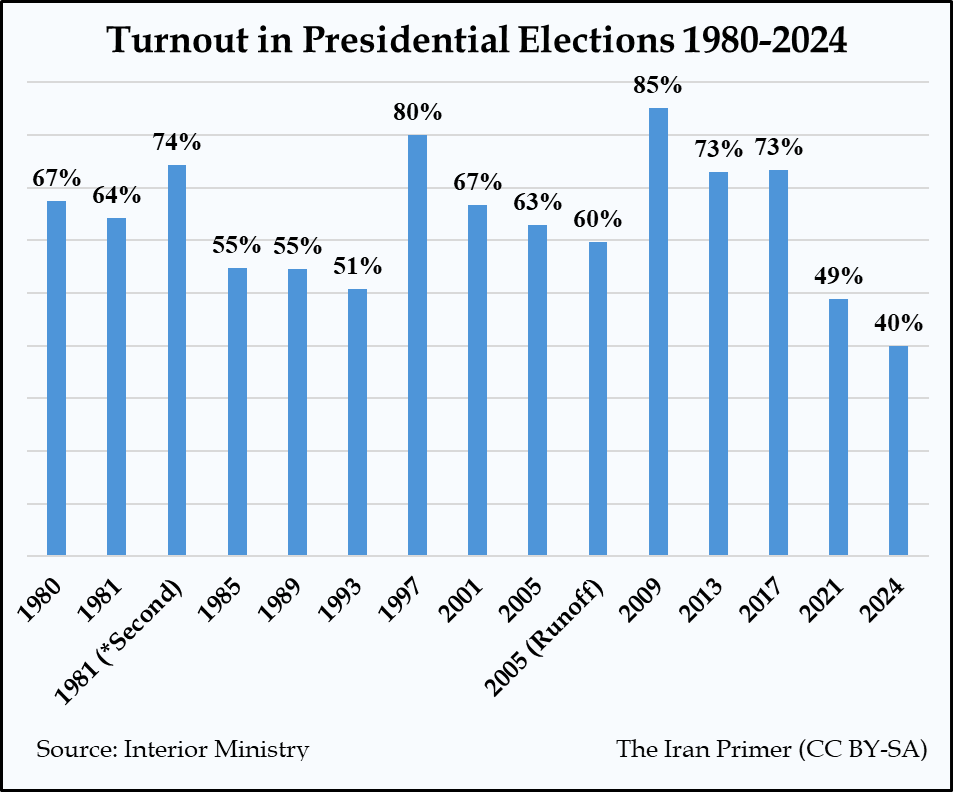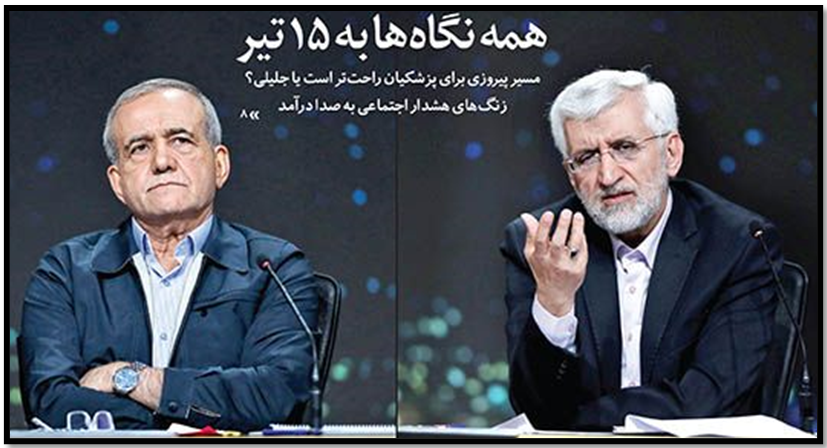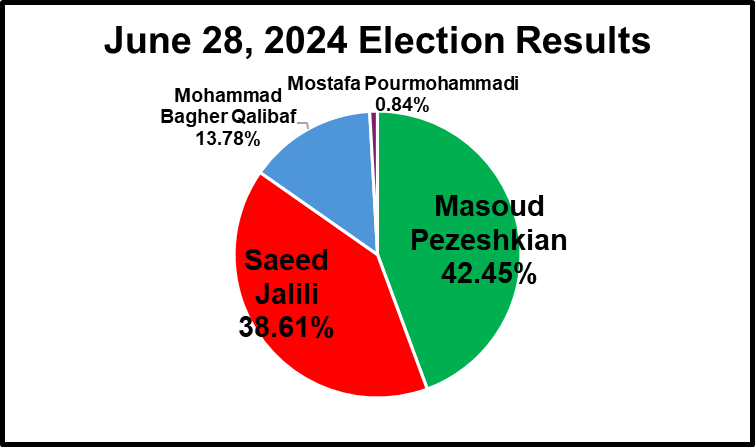
In a stunning blow to Iran’s theocracy, the majority of voters—some 60 percent—boycotted the snap presidential election held on June 28, 2024. It was the lowest turnout since the 1979 revolution ended more than two millennia of dynastic rule. The election also illustrated the wide split among those Iranians willing to vote. None of the four candidates who were allowed to run—out of 80 who registered—won the majority of votes. The two frontrunners reflected opposite ends of Iran’s narrow political spectrum. Masoud Pezeshkian, a reformist member of parliament and dark-horse, came in first, with 10.4 million. Saeed Jalili, a hardliner and former nuclear negotiator, came in second, with 9.4 votes. They faced a run-off on July 5.
The low turnout among Iran’s 61 million voters reflected deep public discontent and political apathy about the regime in Tehran. For decades, the government had cited voter participation as a reflection of the theocracy’s legitimacy. The unprecedented boycott—instigated partly by human rights activists, political prisoners, writers, filmmakers, and relatives of protesters slain in government crackdowns—sent a strong message at a precipice for the Islamic revolution.
After the death of President Ebrahim Raisi in a helicopter accident, Iran faced growing questions about the future of the revolution ahead of the looming succession of Supreme Leader Ayatollah Ali Khamenei, who turned 85 in April 2024. Raisi, a cleric, had been one of two leading contenders to become the next supreme leader. But for the first time since 1981, neither of the final presidential contenders was a cleric — and therefore ineligible to replace Khamenei. Mohammad Bagher Qalibaf, the speaker of parliament and a former Revolutionary Guards commander, was reportedly the regime’s favored candidate. He came in a distant third.

The Results
- Masoud Pezeshkian: 42.45%
- Saeed Jalili: 38.61%
- Mohammad Bagher Qalibaf: 13.78%
- Mostafa Pourmohammadi: 0.84%

In five debates ahead of the poll, Pezeshkian called for improving relations with the West, greater social freedoms and equal rights for women. Jalili pledged to continue the policies of President Raisi, such as expanding ties with non-Western powers and emphasizing the traditional role of women as homemakers.
Turnout declined in all but one of Iran’s 31 provinces compared to the last presidential election in 2021. The only province that showed a slight increase, three percent, was Qom, the bastion of Shiite seminaries and regime supporters.

Provinces with large ethnic minorities marginalized by the central government witnessed particularly low turnout. Pezeshkian, who was born to an Azeri father and a Kurdish mother, championed inclusion and diversity during his campaign. Although he won in most of Iran’s border provinces home to minorities, he failed to generate enough enthusiasm to boost participation in provinces with large Azeri or Kurdish populations.
Turnout in Kermanshah province, home to many Kurds, was down 29 percent compared to the 2021 election. Sistan and Baluchistan, home to the Baluch minority, was down 23 percent. Turnout in Khuzestan, home to many Arabs, was down 20 percent. The government crackdown on the 2022 anti-government protests sparked by the death of Mahsa Amini, a young Kurdish woman detained for poor hijab, was especially bloody in provinces populated by minorities.

After the first round, both candidates appealed to voters on social media, held political rallies, and called on prominent allies to mobilize voters. Qalibaf endorsed Jalili, who could pick up many of Qalifbaf’s three million votes. Pezeshkian faced an uphill battle. “If we do not unite, the future of Iran is in danger,” he warned in on X (formerly Twitter). “Those who are part of the problem cannot save us.” One of Pezeshkian’s prominent supporters put the choice in starker terms. “We won’t let Iran fall to the Taliban,” Mohammad Javad Azari Jahromi, a former telecommunications minister, posted in reference to the rigid rulers in neighboring Afghanistan.
The Islamic republic has only held one other run-off vote for president. In 2005, Mahmoud Ahmadinejad, the little-known mayor of Tehran, defeated veteran politico and former President Akbar Hashemi Rafsanjani.
*Iran held a second presidential election in 1981 after the assassination of President Mohammad Ali Rajai, who was in office for less than a month.
